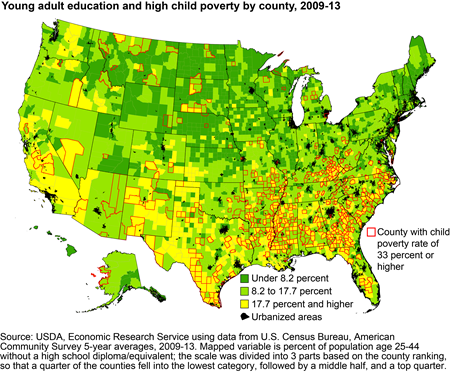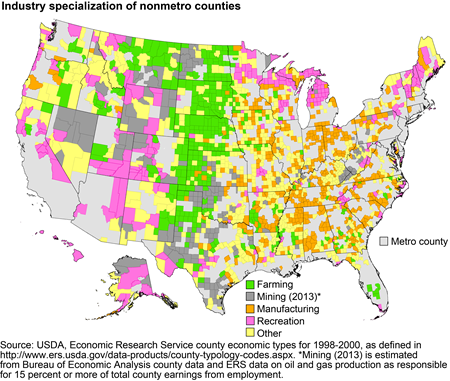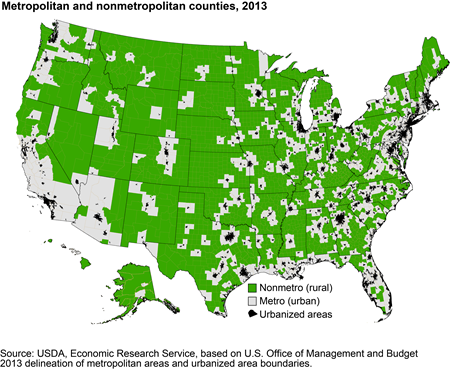Rural Child Poverty Chart Gallery
Note: Updates to this data product are discontinued. Over 1 in 4 rural children are living in families that are poor, according to the official poverty measure, up from 1 in 5 in 1999, but this change was uneven across the rural landscape. Counties with high vulnerability to child poverty, those with both low young adult education levels and high proportions of children in single-parent families, were generally the most hard-hit by the recession of the past decade and experienced substantial increases in their already high child poverty rates. Along with the recession, an increase in rural children in single-parent households, continuing from the 1990s, was a major contributor to the rise in child poverty after 2000. Three factors that shape the geography of high and increasing rural child poverty are explored below: economic conditions, young adult education levels, and family structure. This collection of maps complements the July 2015 Amber Waves feature, Understanding the Geography of Growth in Rural Child Poverty.

Rural education levels have been rising and this is reflected in county statistics. The top quarter of nonmetropolitan counties in young adult (ages 25-44) high school dropout rates in 2009-13 had poverty rates of nearly 18 percent or more. While high, the number of counties with rates this high had fallen from 841 in the 2000 Census to 493. The economic hardship associated with low education levels is reflected in child poverty statistics. Slightly over half of the counties with child poverty rates of over 33 percent were also counties in the top quarter in young adult high school dropout rates. At the same time there are many counties with low education levels, often with substantial Hispanic populations, including mining counties in west Texas and large scale agricultural counties in southwest Kansas, that have lower child poverty rates.

Nonmetropolitan counties have highly diverse industrial specializations. Where farming was once almost synonymous with rural, the predominance of farming as an industry in rural areas of the United States is now largely confined to the Plains States. On average in 1998-2000, manufacturing predominated in many rural counties east of the Mississippi as well as in a scattering of counties further west. Manufacturing has historically been a boon to rural low-skill workers, offering higher pay than other industries and often steadier work. But manufacturing was especially hard hit during the recent economic downturn, and that was reflected in the child poverty statistics for manufacturing-dependent counties. In 1999, these counties had average child poverty rates of 18 percent, 2 percentage points below the overall nonmetropolitan average. Their child poverty rates moved substantially upwards over the subsequent decade, reaching nearly 27 percent in 2009-13, a greater increase than observed in any other industry type of county.


